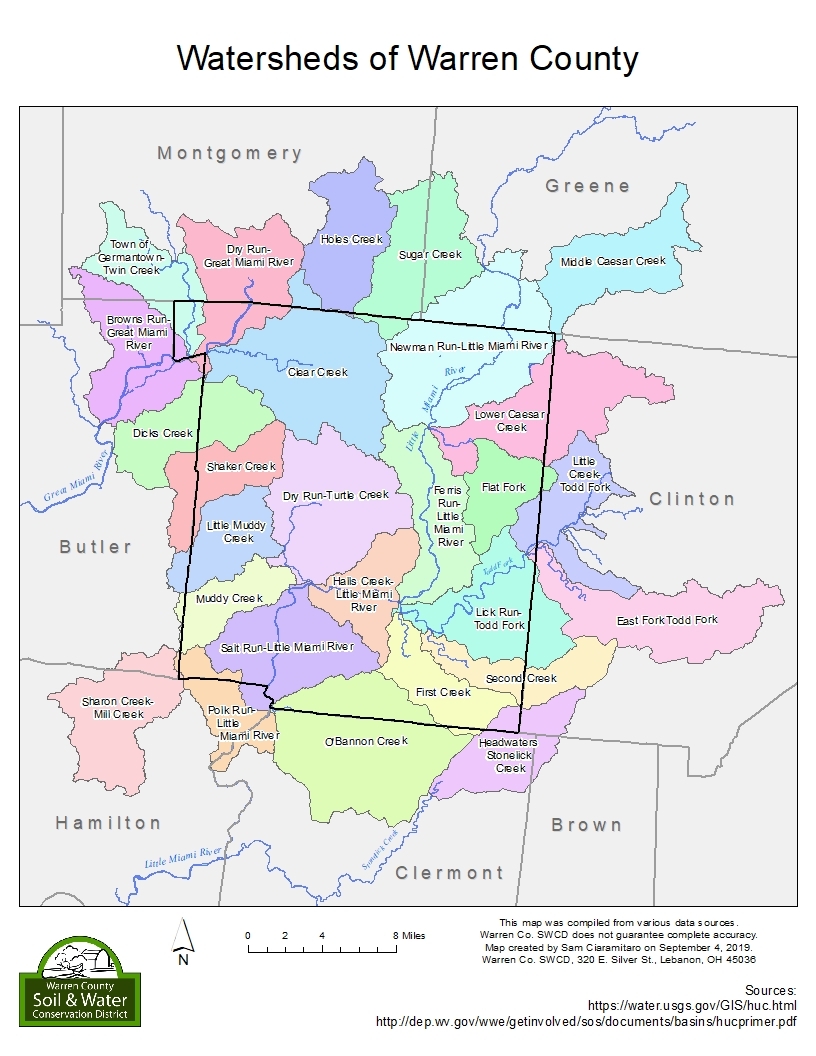Watersheds by Warren County SWCD
The term "watershed" is not a topic of everyday discussion or something people think about. However, watersheds are vitally important to people and the environment. The following article from the Warren County Soil and Water Conservation District sheds light on understanding our watersheds.

Watershed
Did you know that no matter where you live, everyone lives in a watershed?! Yep, you read that right. Every part of Warren County, the state of Ohio and the United States is all connected and part of a watershed.
So now you may be wondering, what is a watershed? A watershed is a land area that drains to a central location, such as a lake, river, or ocean. You can almost think of it as a shallow depression, or a bowl, in the landscape where the “rim” is a ridge or a hill. Here in Ohio, we have two main watersheds: the Lake Erie Watershed and the Ohio River Basin Watershed.
In Warren County, we are part of the all-encompassing Ohio River Basin Watershed. But when broken down even further, Warren County is made up of several smaller watersheds that then drain to either the Great Miami River or the Little Miami River. While the Great Miami River and its’ watershed in Warren County is mainly focused more towards the northwest corner of the county, it eventually flows into the Ohio River. The Great Miami River flows through all or part of 15 counties with the watershed being comprised of urban development and agricultural land use.
The other major river, the Little Miami, runs nearly the entire length of the county and like the Great Miami, also flows into the Ohio River. The watershed for the Little Miami River spans across a large portion of southwestern Ohio, flowing through all or part of 11 counties. Much of the watershed that feeds into the Little Miami River is predominantly in agricultural land, but still contains urban development. After the water from the Great Miami and Little Miami flow into the Ohio River, it then makes its way to the Mississippi River and then reaches its’ final destination in the Gulf of Mexico.
To understand more of how the water systems are connected, it is important to note that even the smallest of actions can affect a watershed. Examples such as runoff from fields, lawns and pavement could carry potentially harmful materials into the watershed. In Ohio, harmful algal blooms caused by phosphorus runoff, failing drinking water systems, wastewater and aging water infrastructure are some of the top water issues that are being addressed. In 2019, Governor Mike DeWine launched H2Ohio, “a comprehensive water quality initiative that is working to strategically address serious water issues that have been building in Ohio for decades” (H2Ohio, 2019). The top priorities of H2Ohio include reducing phosphorus, creating wetlands, addressing failing septic systems, and preventing lead contamination.
To see H2Ohio in action locally, the Warren County Soil & Water Conservation District is currently in the process of applying for a H2Ohio Wetland Grant that will help to create a wetland to address stormwater flooding in Turtlecreek Township.

